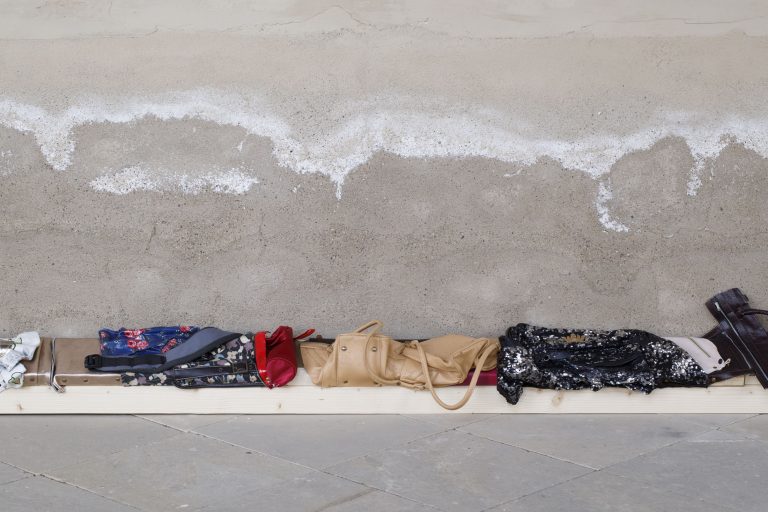“Deny Braun is a time traveler. He has traveled hundreds of millions of years into our age and is about to leave it to face the distant future. He is well equipped to do so. He traces a brief episode in human culture as a short episode in the planet’s history, during which one species achieved hegemonic status and began to threaten itself. It cannot threaten Deny Braun. He is a cockroach, and so he knows full well the mixture of disgust and admiration that this species has for him while at the same time realizing that this disdain paradoxically stems from the same capacity for adaptation that the human species itself has always excelled so much at.Denis Baštuga, a young Czech painter of Slovak origin, chronicles Braun’s long presence on Earth. He collects the fragments of available information and tries to piece together at least a partial picture of the fate of the mythical creature, which weaved its way between the heavy legs of the dinosaurs, coped unscathed with rising and falling climatic temperatures, and recently survived Hiroshima. Baštuga puts the information he has gathered into patterns designed to capture the main features of Braun’s life. In doing so, he discovers a principle of conflict that is not conditioned by epochs and creates a persistent pressure that must be resisted. He finds parallels to the human species and sees the dinosaurs as creatures that influenced the cockroaches and our ancestry in constructing neural connections so irreversibly that we still use them at the intuitive level today. Then, one of the questions is whether the whole of human civilization is stuck between those three layers of the human brain, of which the oldest responds to stress by flight, aggression, or freezing. For Baštuga, our ability to withstand constant pressure and adapt to new conditions becomes essential. Can we learn more about this by chronicling the life and (unlikely) death of Deny Braun?Denis Baštuga is a sixth-year student at the Prague Academy of Fine Arts. His primary focus is painting, although his paintings reveal at first glance that drawing is his closest means of expression. He draws and writes on his canvases; the contents of his paintings tend to be assembled from layers of information whose external disparity turns into internal connections upon more prolonged examination. He moves freely between the distant pasts and the moving section we call the present. He named the character of the cockroach Deni Braun because it gives a better impression of his new paintings being closer to the genre of a civilizational psychological fable (with an uncertain course and an open ending).”
– Jiří Ptáček, exhibition curator.































